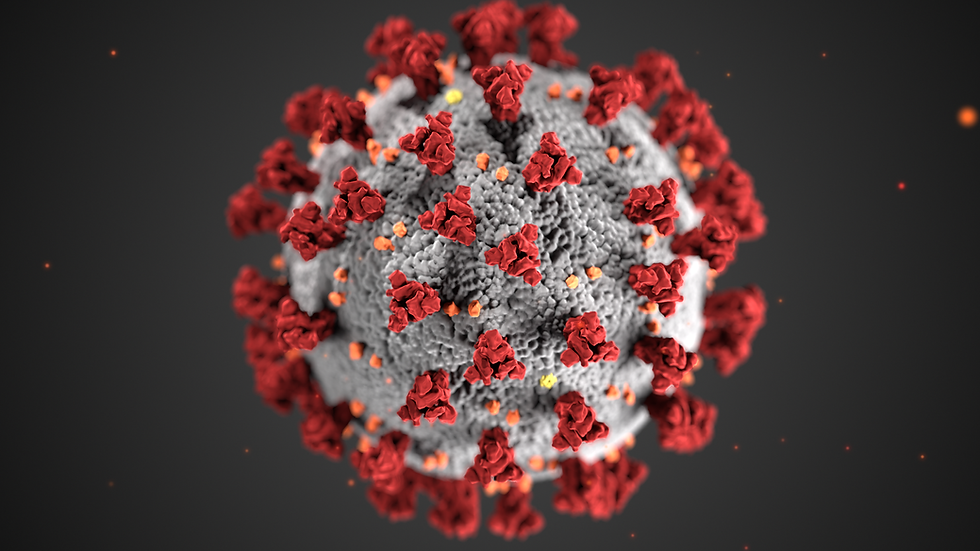The Lost Girls Of Covid
- GSTAR Westlake
- Jan 17, 2022
- 4 min read
Written by Mallory Wenk, Edited by Adelle Yong
The pandemic is erasing decades of progress in young women’s health, education, and independence in developing nations.

The Covid-19 pandemic has hit the world hard, shutting down entire countries and pushing healthcare systems to the brink of utter disaster. Governments around the world had to choose what actions they were going to take to protect their people, oftentimes that included banning large gatherings of people and the closing of schools. In Kenya, this closing of schools devastated the development and safety of adolescents, in particular girls. While Kenya has been spared more of the brunt of Covid cases and deaths, due to their younger population and lower close-quarter transmission, more than a third of the country lives in poverty and their fragile health-care system could very easily be overwhelmed by the virus.

Leading to extreme caution on the government's part, keeping schools closed from march 2020 to January 2021, international travel bans, series of strict curfews, and lockdowns. This has kept the inflection rates low but the drastic social and economic fallout from those actions have greatly affected the nation, including widespread food insecurity, domestic violence, and unemployment. Students, especially female students, are now home, trying to continue their education but are blocked by abusive parents, lack of money to pay for schooling, chores, and growing rates of unwanted pregnancies and marriages. Without continuing their education, these girls face decreasing of their potential earnings, being at a higher risk of violence, and possibly shortening their lives and those of their children.

Now the question is if there is still time to recover what has been lost in the pandemic, given that over the past 25 years there has been positive growth towards better futures for these girls. Before the pandemic the gender gap in education was closing and boys weren’t significantly more likely to be literate compared to girls. While rates of child marriage and female genital multialtion remained high, despite steadily decreasing, the rates of adsolcant pregnancy, the leading cause of death for young women in developing countries, was down significantly due to more access to education and contraceptives. All of these decreasing rates greatly benefited these girls as they became adults, they were more likely to continue their education, delay marriage and plan their families, were less likely to be stuck in an abusive relationship and poverty. All this also extends and benefits their children who are more likely to survive to adulthood and lead better and healthier lives than their mother. All of this effort on the nation's part to create the systems to help and build up these women give back to the country’s economy, World Bank economist Lawerance Summers argues educating girls “may well be the highest return investment available in the developing world”.
Once the government closed the schools, tens of thousands of children were suddenly without a way to continue their education, the minister of education did try to distribute learning materials over electronic devices, but only 1 in 5 adolescents was able to access those tools and more than half of them didn’t have consistent electricity at their homes. Compounding these problems, many Kenyans lost their jobs, the ability to feed their families, and send their children to school. Even if children and their families wanted them to return to school they were unable to pay the fees, keeping the girls stuck at home and in the loop of the generation before them.

Schools weren’t the only places girls were able to flee, recreational community centers and nonprofits provided much needed escapes for these girls, giving them basics, but once again the pandemic shut these places down and investors left to other projects. Now all these girls were stuck at home with their abusers and without the help from adults who could recognize something was amiss. Data from the effects of the pandemic on education and the health and safety of the girls have been released by the Kenyan government. Once the schools reopened 92% of boys reenrolled compared to the 84% of girls, and past studies have indicated that when girls aren’t in school there is increased chances of adolescents marriage, pregnancy, and female genital mutilation, and if they become pregnant they and the child are more likely to die from chirldbirth. Long-term effects from these increasing rates are still not clear, given that electronic methods of surveys would leave out the most affected and vulnerable groups, while social isolation has restricted researchers from their usual proxies for this information: teachers, community organizers, spiritual leaders, coaches, mentors, etc.
Plans are already underway to get these girls and communities back on track in the positive direction of the pre-pandemic times. The best ways to accomplish this is “cash, care, and data”, financially supporting, encouraging men to help more with child care, and to bring the biggest issues into clearer view. The Kenyan government is aware of this issue and has begun to address it by supporting the girls, providing sanitary products, psychological aid, empowering their parents on their roles and responsibilities, and reviewing policies to ensure gender responsiveness. Hopefully all of these efforts from the government and different organizations will help girls to return to schools and other safe spaces to continue with their education and bettering their lives and those of their children.


Comments